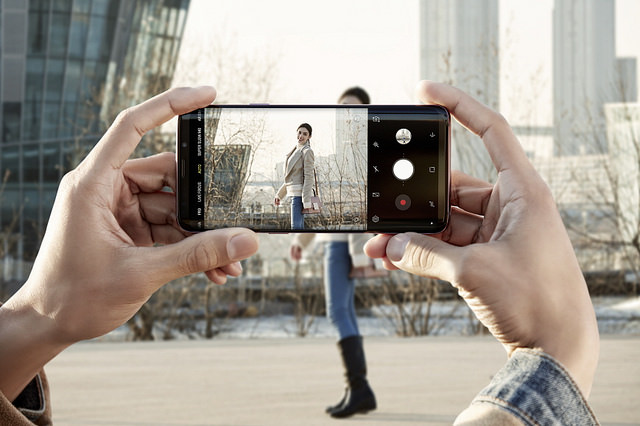
Take Smartphone Photography to a New Level with Samsung’s All-New Dual Aperture Feature
It’s so easy to take the incredible technology available in today’s day and age for granted. Just two decades ago, if a new mom was not prepared with a camera, she may never catch her baby’s first smile or first steps. Today, with a smartphone in the pocket of almost everyone, we’re all able to capture the best moments to create images that speak louder than words. New features, such as Dual Aperture available in Samsung Galaxy S9+ enable users to engage with their inner photographer, and create brightness in a dark setting or explore artful new trends.
The main settings professional photographers tend to use are ISO, shutter speed, and aperture. Of those, aperture is most important when considering all the aspects it affects, including lighting, depth of field, and shutter speed. A wider more efficient aperture allows more light resulting in brighter photos. More background blur illustrates a shallow depth of field largely responsible for bokeh - the aesthetic quality of the blur produced in the out-of-focus parts of an image produced by a lens.
The Galaxy S9+’s cutting-edge Dual Aperture camera is designed to adapt to various lighting conditions just as the human eye would, automatically letting in more light when it’s dark and less when it’s too bright to ensure that photos are crisp and clear anytime, anywhere. The rear camera ensures that photographs taken during the night come out crystal clear, so aesthetically pleasing that no further editing or fine tuning is required.
This level of clarity is possible thanks to Samsung’s pairing of a new F1.5 aperture lens, which is the brightest currently available on a smartphone, with an F2.4 lens. The lenses automatically adjust their apertures to reduce visual distortion and deliver the best possible picture, and help the camera provide 28 percent better reception to light1. Users may also adjust the apertures manually by utilizing the camera’s Pro Mode. This ensures creative control – users have the advantage of a live focus and background blur.
The best-in-class Dual Camera featured on the Galaxy S9+ is composed of a pair of 12MP cameras – an F1.5 wide-angle lens with Super Speed Dual Pixel image sensor, and an F2.4 telephoto lens – that seamlessly combine their respective images into one. The telephoto lens offers 2X optical and up to 10X digital zooming capabilities, while the camera’s dual optical image stabilization (OIS) technology ensures that both lenses provide crisp, clear shots even when the user has a shaky hand.
The camera’s Live Focus feature makes snapping selfies more fun, and allows you to easily capture a perfect portrait shot and adjust the depth of field before the picture is taken, or afterward, in the Gallery app. The Background Blur function offers users even more creative control over their pictures, allowing them to adjust their photo’s focus by applying a variety of shapes, including a heart or star to the background.
The Dual Capture feature was specifically designed to capture beauty in the background – or views that could be missed when taking a Live Focus shot. This function allows you to snap a close-up Live Focus portrait while also capturing the surrounding scenery, so the final photo will encapsulate the beauty of the moment in its entirety.
In addition, the cameras of the Galaxy S9+ utilize machine learning technology to ensure that captured images are as clear as can be. The cameras’ Selfie Focus feature, for instance, automatically distinguishes the user’s face from their surroundings when taking a selfie, while Image Classification Solution automatically categorizes images and recognizes subjects’ surroundings to apply filters that make the photos looks like they were taken by a professional photographer.



























